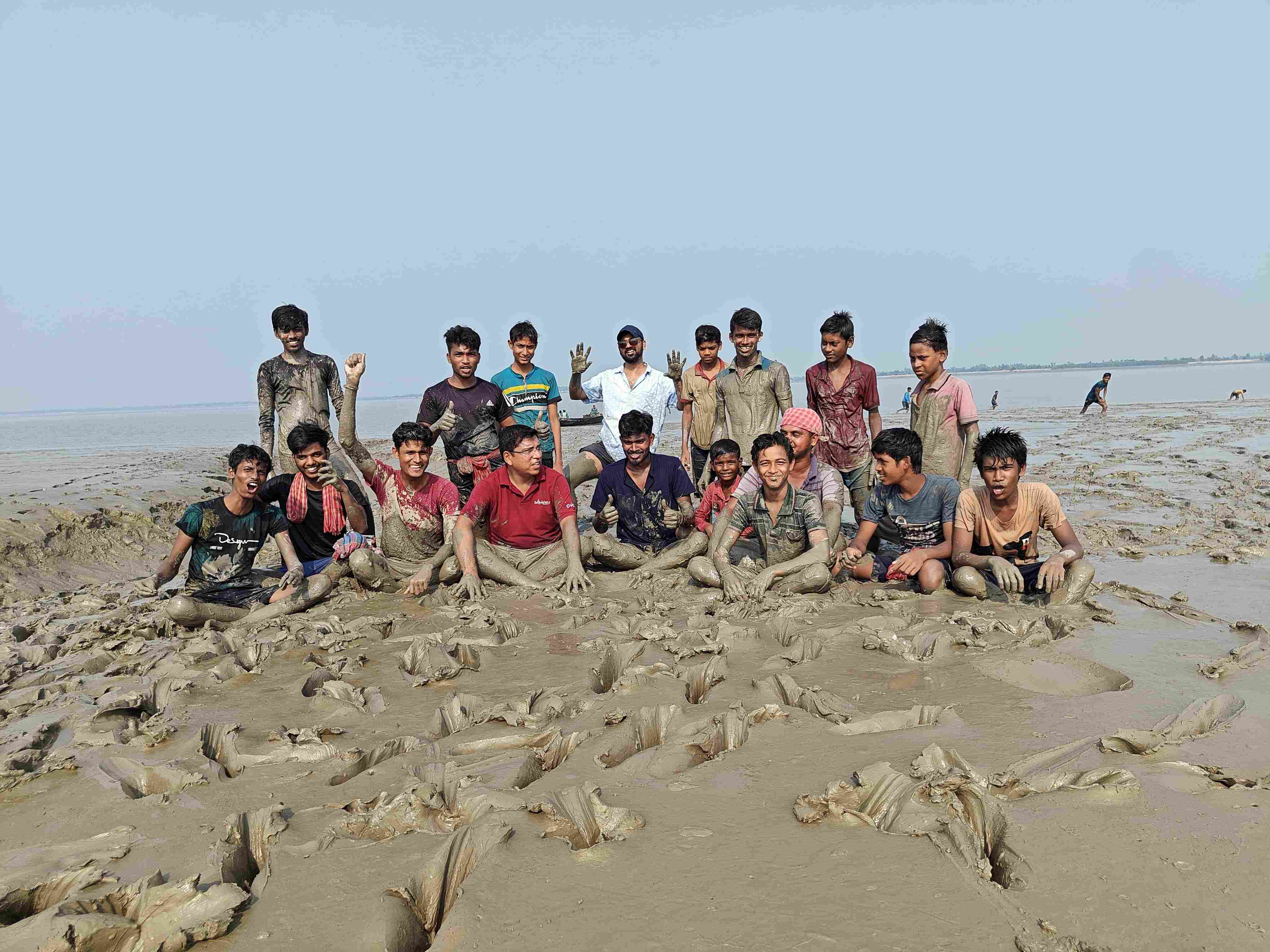When it comes to combating the impacts of climate change, we often think of high-tech solutions and grand gestures. But what if I told you that some of nature’s unsung heroes are quietly working day in and day out to protect our planet? Enter mangroves – these incredible ecosystems are not only breathtakingly beautiful but also serve as Nature’s Superheroes in mitigating the devastating effects of climate change. In this blog post, we will dive into the world of mangroves, uncovering their remarkable abilities and exploring why they deserve more recognition for their efforts in saving our planet.

WHAT ARE MANGROVES?
Mangroves are defined as an association of halophytic trees, shrubs and other plants growing in brackish to saline tidal waters of tropical and subtropical coastlines (Mitsch and Gosselink 2007). Mangroves are generally restricted to the tidal zone.
These trees have evolved over time to adapt to their unique environment by developing special adaptations that allow them to thrive despite unpredictable tidal changes and high salinity levels. For example, their extensive root systems (pneumatophores) help stabilize shorelines against erosion while also providing habitats for various marine organisms.
A neutral pH of 7 is generally considered suitable for mangroves (Lee et al. 1996). However, it can also thrive in saline pH ranging between 4.5-5.5.
ROLE OF MANGROVES IN MITIGATING CLIMATE CHANGE IMPACTS
Mangroves, also known as “nature’s superheroes”, are a type of coastal wetland ecosystem found in tropical and subtropical regions. These unique trees and shrubs have adapted to thrive in the harsh conditions of intertidal zones, where they grow in salty water and muddy soil. While often overlooked and undervalued, mangroves play a crucial role in mitigating the impacts of climate change.
One of the main ways that mangroves help mitigate climate change is through carbon storage. Mangrove forests store significantly more carbon per square kilometer than any other terrestrial ecosystem on Earth. Their dense root systems trap sediment and organic matter, preventing it from being washed away into the ocean or decomposing and releasing carbon dioxide into the atmosphere. Scientific research has shown that mangroves are highly efficient at capturing and storing carbon compared to other types of forests. In fact, they can store up to five times more carbon per hectare than tropical rainforests. This makes them one of the most effective natural solutions for reducing atmospheric CO2 levels.
In addition to storing carbon, mangroves also help reduce greenhouse gas emissions by acting as a natural buffer against storm surges and sea level rise. The dense root systems of mangrove trees act as natural barriers that dissipate wave energy and protect coastlines from erosion caused by storms. This not only helps prevent property damage but also reduces the need for costly man- made seawalls or dikes which require large amounts of energy to construct.
HOW EXACTLY DO MANGROVES SEQUESTER CARBON?
When leaves fall from mangrove trees, they decompose slowly due to waterlogged soils with low oxygen levels. This means that a large amount of organic matter remains trapped in the sediment layers beneath mangrove forests. As this organic matter accumulates over time, it becomes an essential component of a process called “blue carbon”.
Blue Carbon refers to the long-term storage of organic carbon in coastal and marine ecosystems such as mangroves, salt marshes, and seagrasses.
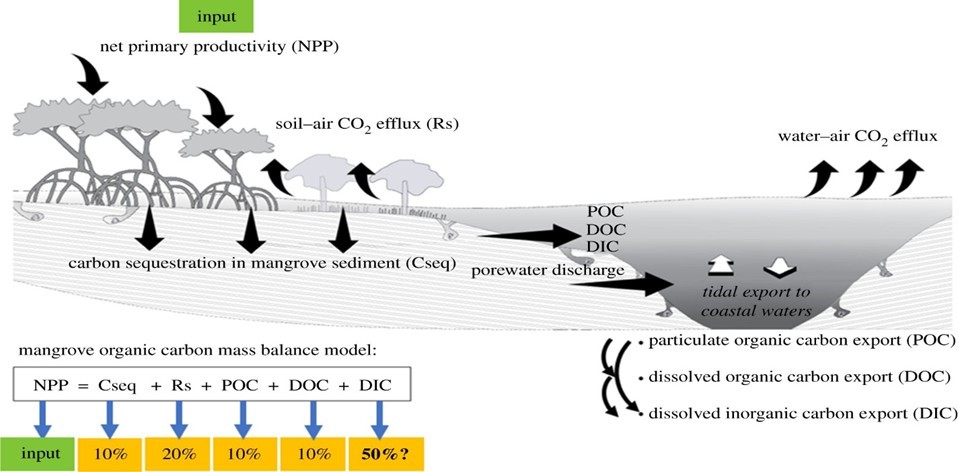
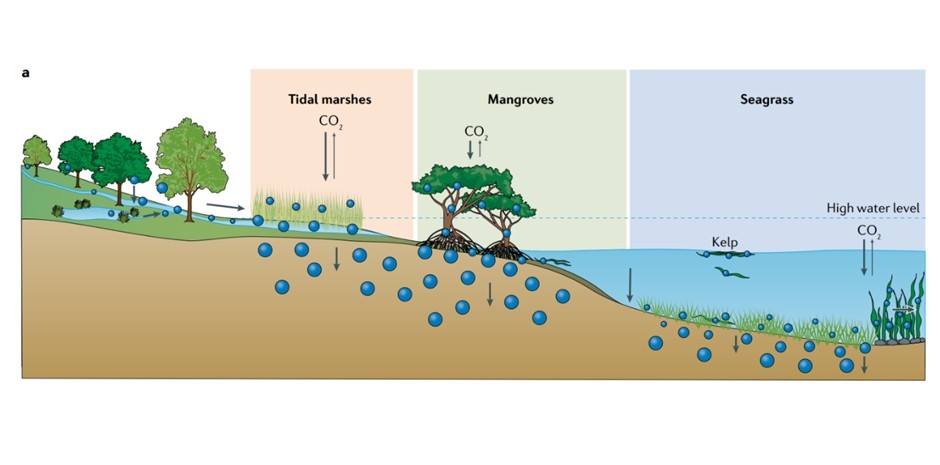
CHALLENGES AND THREATS TO MANGROVES
Mangroves are one of the most valuable ecosystems on our planet, providing a multitude of benefits to both humans and the environment. However, these unique forests are facing numerous challenges and threats that pose a significant risk to their survival:
- Coastal Development: One of the biggest threats to mangroves is coastal development. With increasing population and economic growth, there has been a rise in the construction of infrastructure such as ports, harbors, and tourist resorts in coastal areas where mangroves thrive. This development often involves clearing large areas of mangrove forests to make way for buildings and other structures, resulting in habitat loss for many species that depend on these forests for survival.
- Pollution: Pollution is another major threat to mangroves. The runoff from industries, agriculture, and urban areas can contain harmful chemicals such as pesticides and fertilizers that can harm or even kill mangrove trees. Oil spills from shipping activities or offshore drilling also have devastating effects on mangroves by covering their roots with toxic substances, suffocating them and preventing them from absorbing essential nutrients.
- Overexploitation: The demand for timber, fuelwood, charcoal production, fishery products like shrimp farming has put immense pressure on mangrove forests worldwide. Unsustainable harvesting practices such as cutting down trees before they reach maturity or overfishing lead to irreparable damage to these vital ecosystems.
WAYS TO PROTECT MANGROVE ECOSYSTEMS
1. Educate yourself about mangrove ecosystems:
The first step towards supporting mangrove conservation is to educate yourself about these unique ecosystems. Learn about the different species of trees that make up a mangrove forest and their significance in maintaining a healthy ecosystem. Understand how they contribute to mitigating climate change impacts on coastal communities.
| Planting objective | Mangrove species |
| Regeneration of mangroves | Avicennia marina, A. officinalis, Aegiceras corniculatum, Excoecaria agallocha, Acanthus ilicifolius |
| Coastal protection against tidal waters, erosion and cyclones | Rhizophora apiculata, Rhizophora mucronata, S. alba, A. marina, A. officinalis, H. fomes, Kandelia candel |
| Protection of lagoons and estuaries | A. marina, Avicennia alba, A. officinalis, Bruguiera cylindrica, R. apiculata, R. mucronata, Rhizophora stylosa, Sonneratia caseolaris, S. alba, K. candel, A. ilicifolius |
| Dyke protection along the sea and aquaculture farms | A. marina, A. alba, A. officinalis, Ceriops tagal, R. apiculata, R. mucronata, R. stylosa, S. caseolaris, B. gymnorrhiza, E. agallocha |
| Introduction to new mudflats | R. mucronata, R. apiculata, A. marina, A. officinalis, A. corniculatum |
| Harvest of forest products, timber, charcoal and firewood | S. alba, S. apetala, A. marina, A. officinalis, R. apiculata, R. mucronata, C. tagal, B. gymnorrhiza, K. candel, H. fomes, Xylocarpus granatum |
| Enhancement of fishery resources | Avicennia spp., Bruguiera spp. |
| Mangrove species | Adaptability/preferred site |
| A. marina | Relatively dry tidal lands, river banks or highly saline flats, arid zones |
| B. gymnorrhiza, H. fomes | Areas with a large freshwater supply |
| C. tagal | Highly saline areas |
| Nypa fruticans | Site covered with grasses and subject to lower tidal inundation, low salinity |
| R. apiculata, R. mucronata | Muddy sites of estuaries and mudflats |
| Sonneratia alba | Close to sea, moderately saline areas |
| X. granatum | Low saline sites, areas of low tidal amplitude |
2. ENGAGE IN RESTORATION AND PLANTATION ACTIVITY:
By taking part in these initiatives, you not only contribute directly towards restoring damaged areas but also raise awareness about the importance of protecting these habitats.
CITING A CASE STUDY OF MANGROVE RESTORATION DONE BY SANKALPTARU FOUNDATION IN SUNDARBANS, WEST BENGAL
Sundarbans is a mangrove area in the delta formed by the confluence of the Ganges, Brahmaputra and Meghna Rivers in the Bay of Bengal. This massive forest and tiger reserve is one the world’s natural wonders as it creates a unique ecotone between terrestrial and marine ecosystem. These unique ecosystems have gone through massive destruction due to soil erosion and sea level rise in the Bay of Bengal by which prevalent storms like amphan and yaas increased the water level in the rivers, penetrating into villages, dismantling houses, roads, trees etc.
Therefore, SankalpTaru has pledged to lead Mangrove Restoration under its initiative “Project Shyamolima” to protect and restore one of the World’s largest mangrove forests, raise employment opportunities, strengthen economic stability, support women empowerment and social equality to the villagers and the local Samprada Community.
An inhouse nursery has been built in the village where the saplings can be transported from the nursery to the planting site. The local community and volunteers traversed through some of the most difficult terrains of swampy shores and slobby mudflats to armour the vulnerable coastline.
Impact to be created by planting 1.1 Lakh+ mangrove saplings- Approximately 505000 tons of C02 to be sequestered in its life span with a survival percentage of 80%

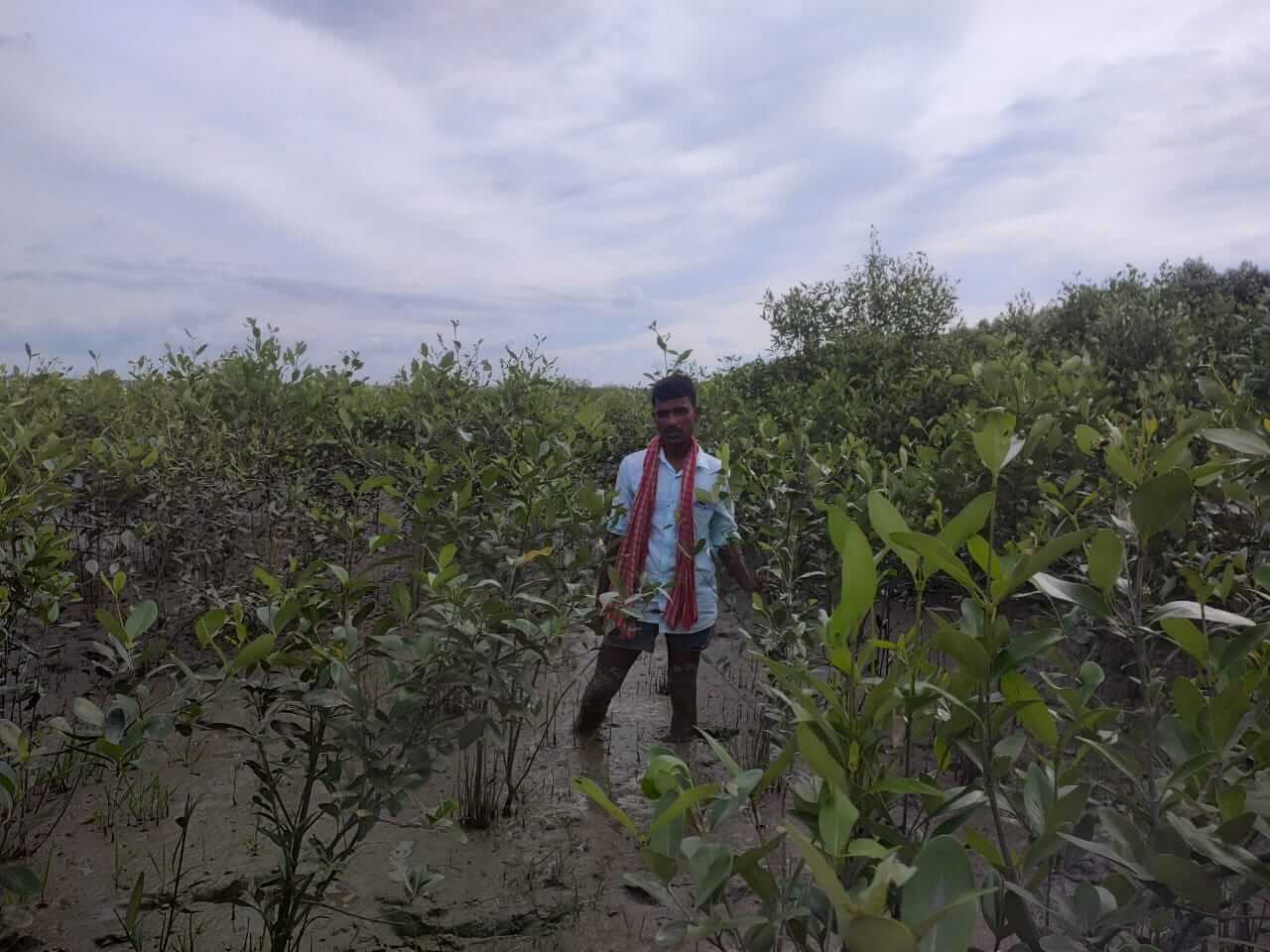
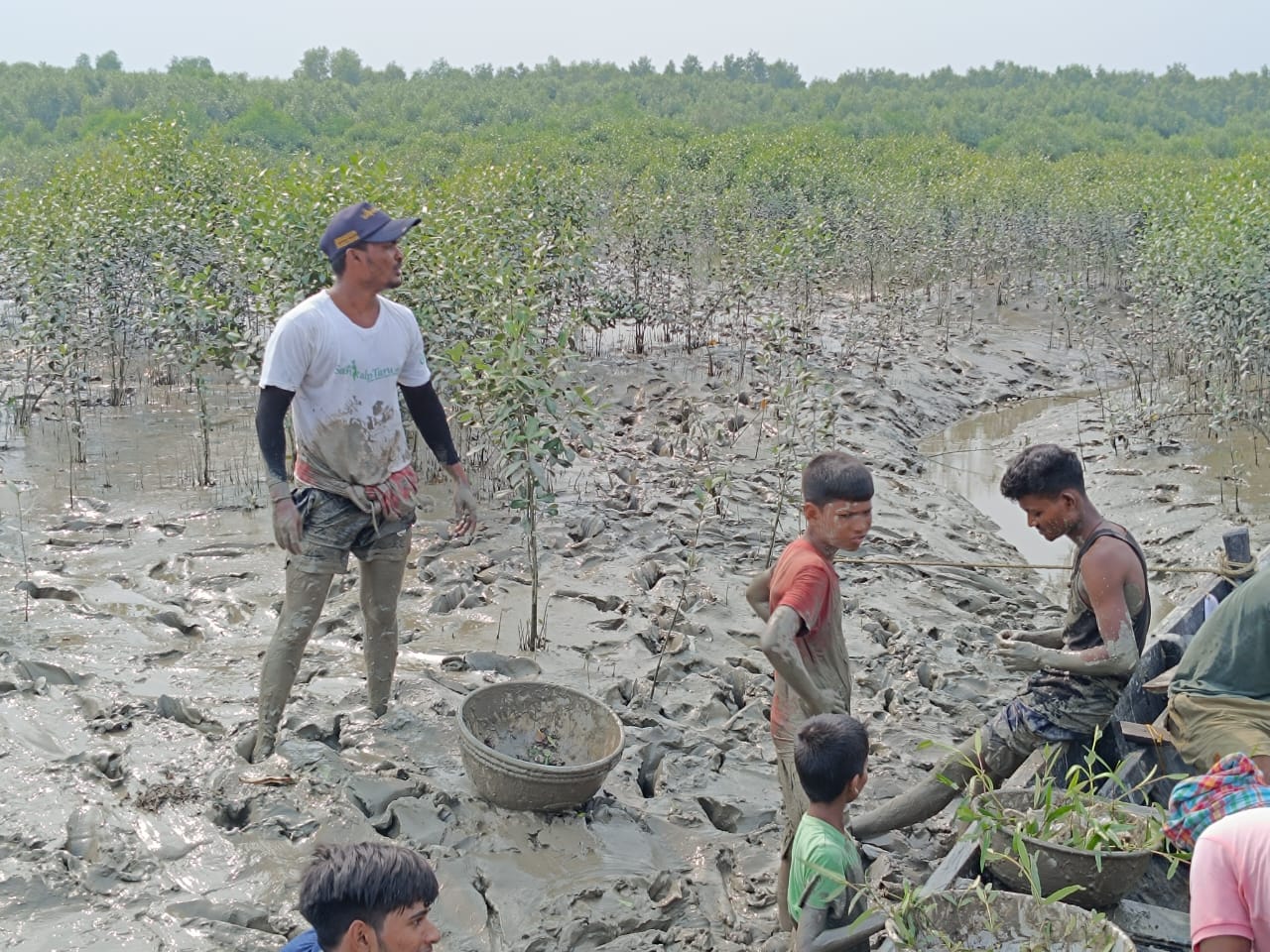
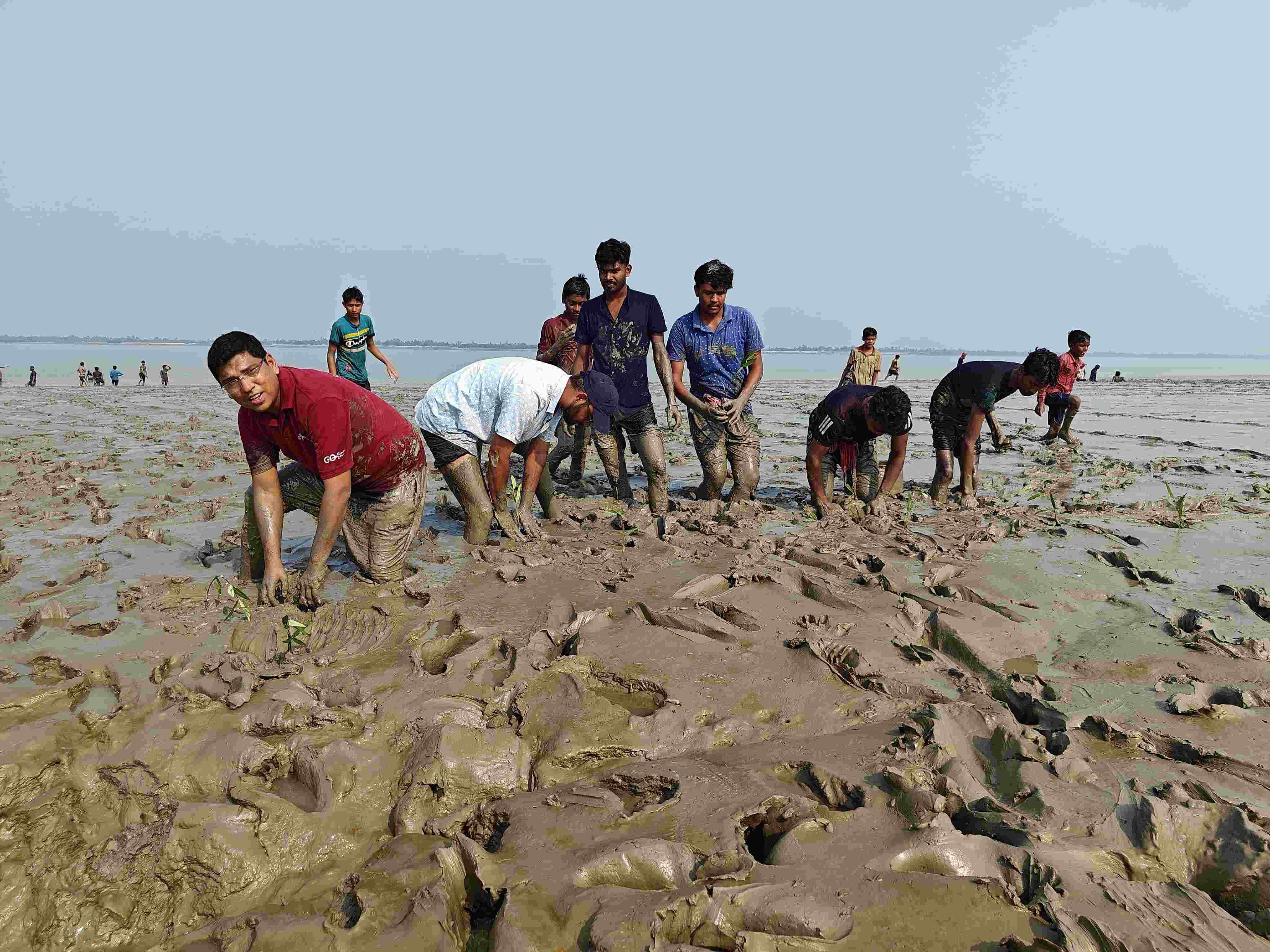
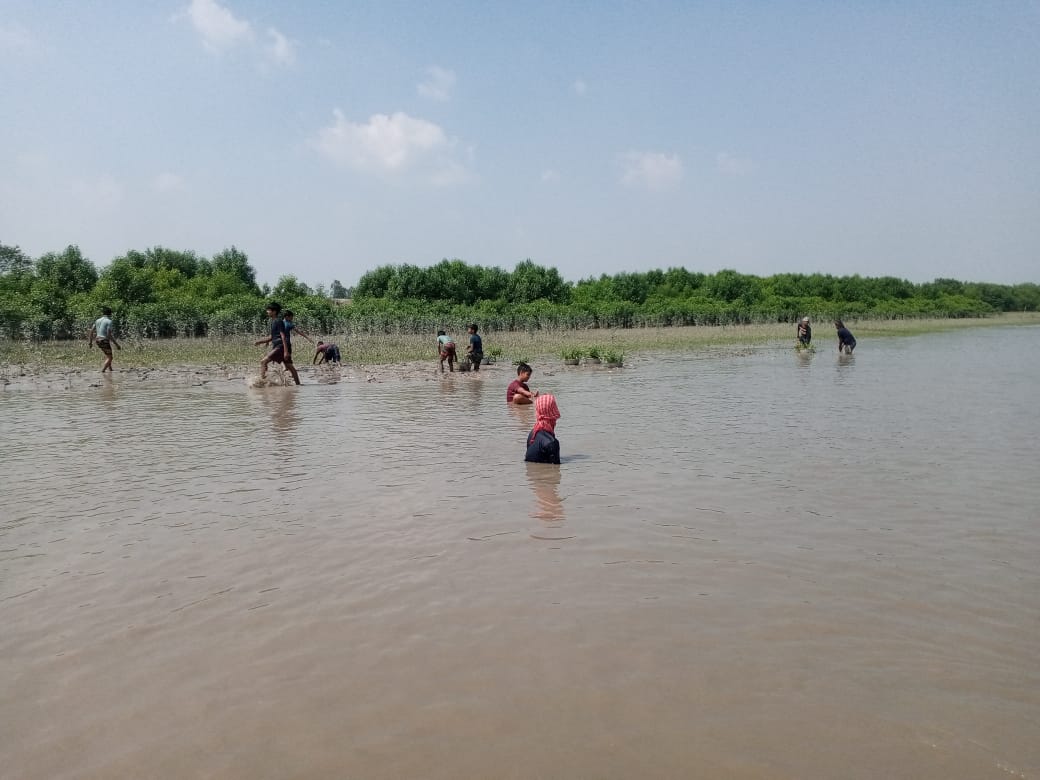
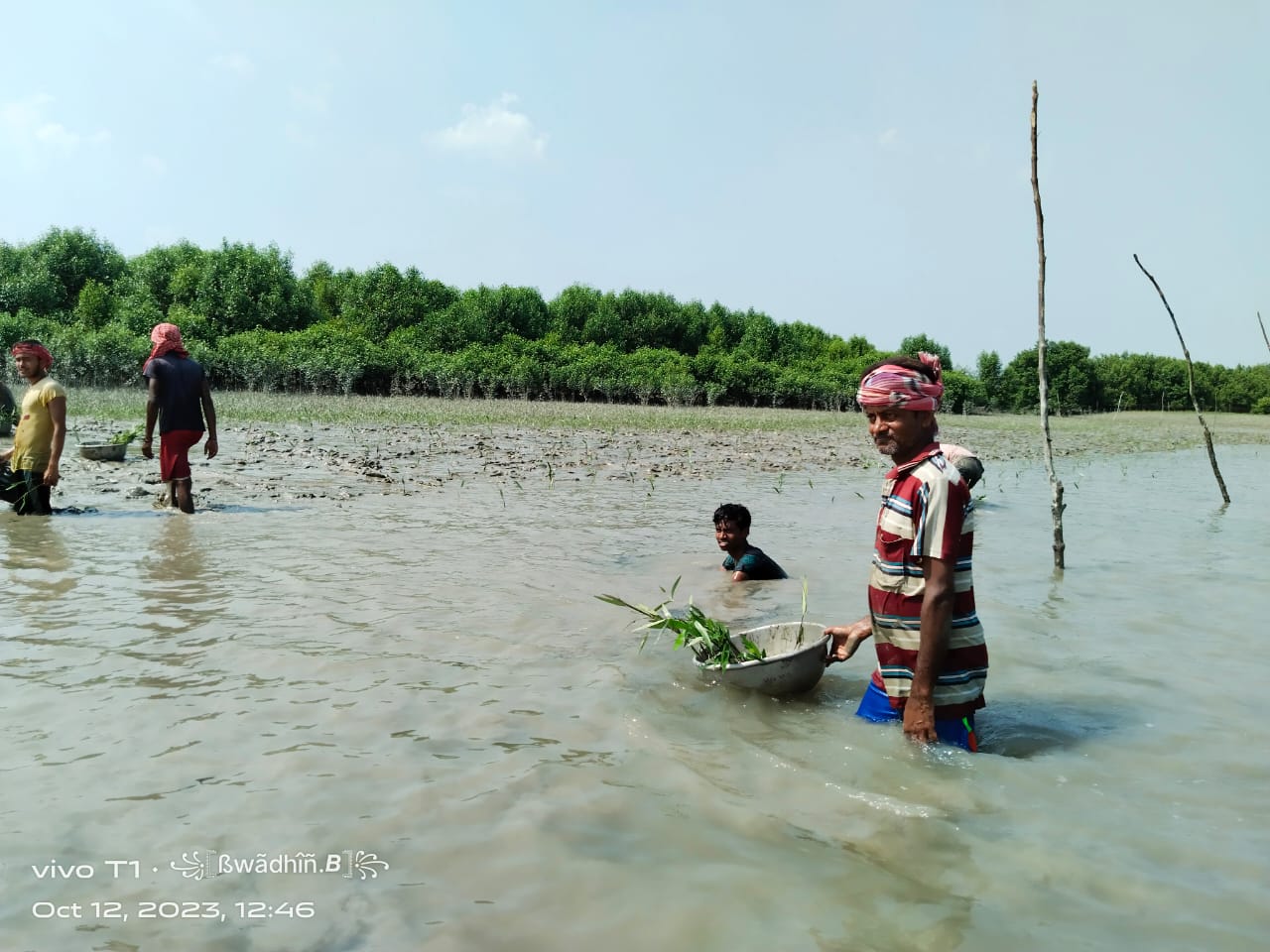
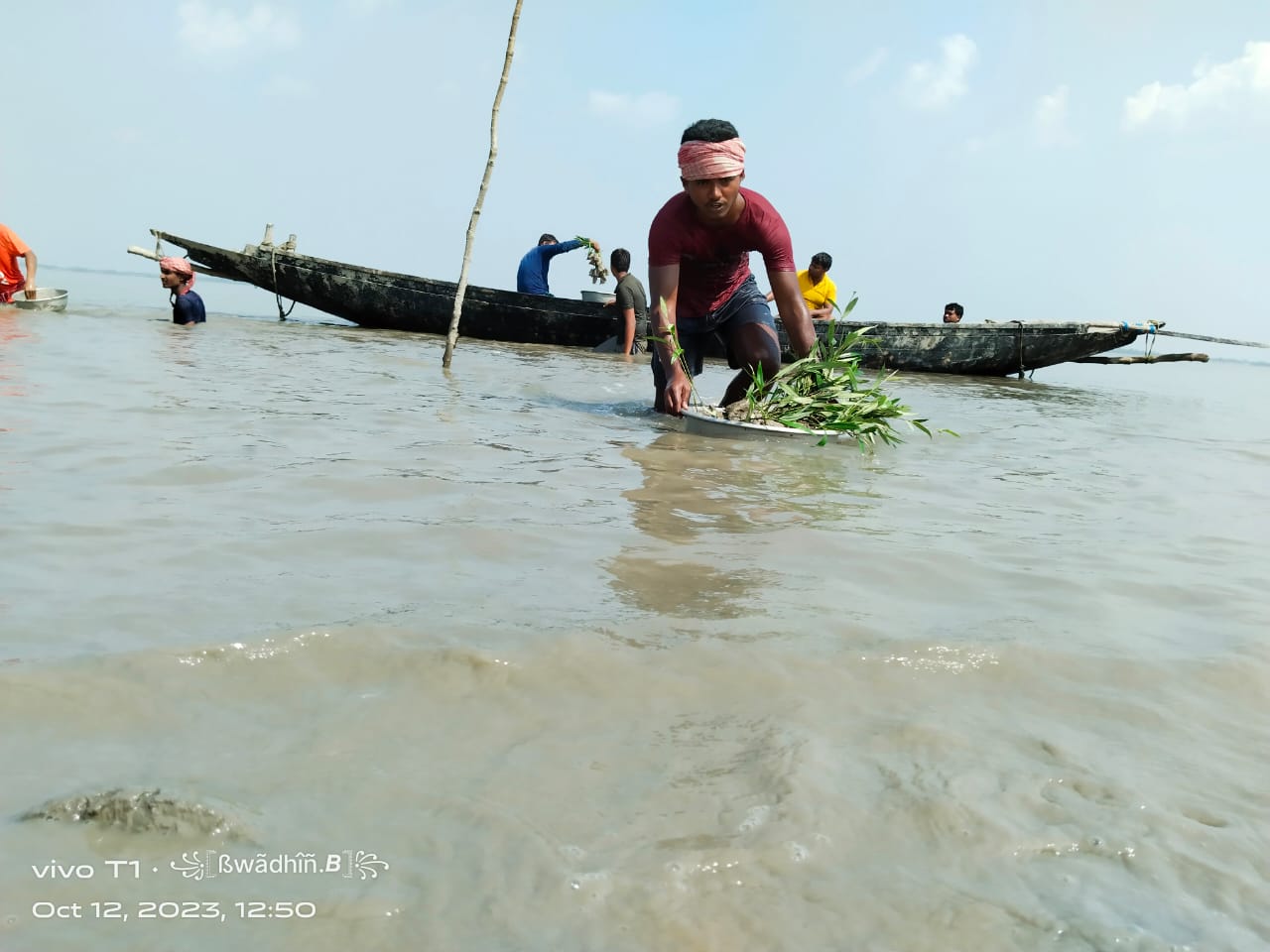
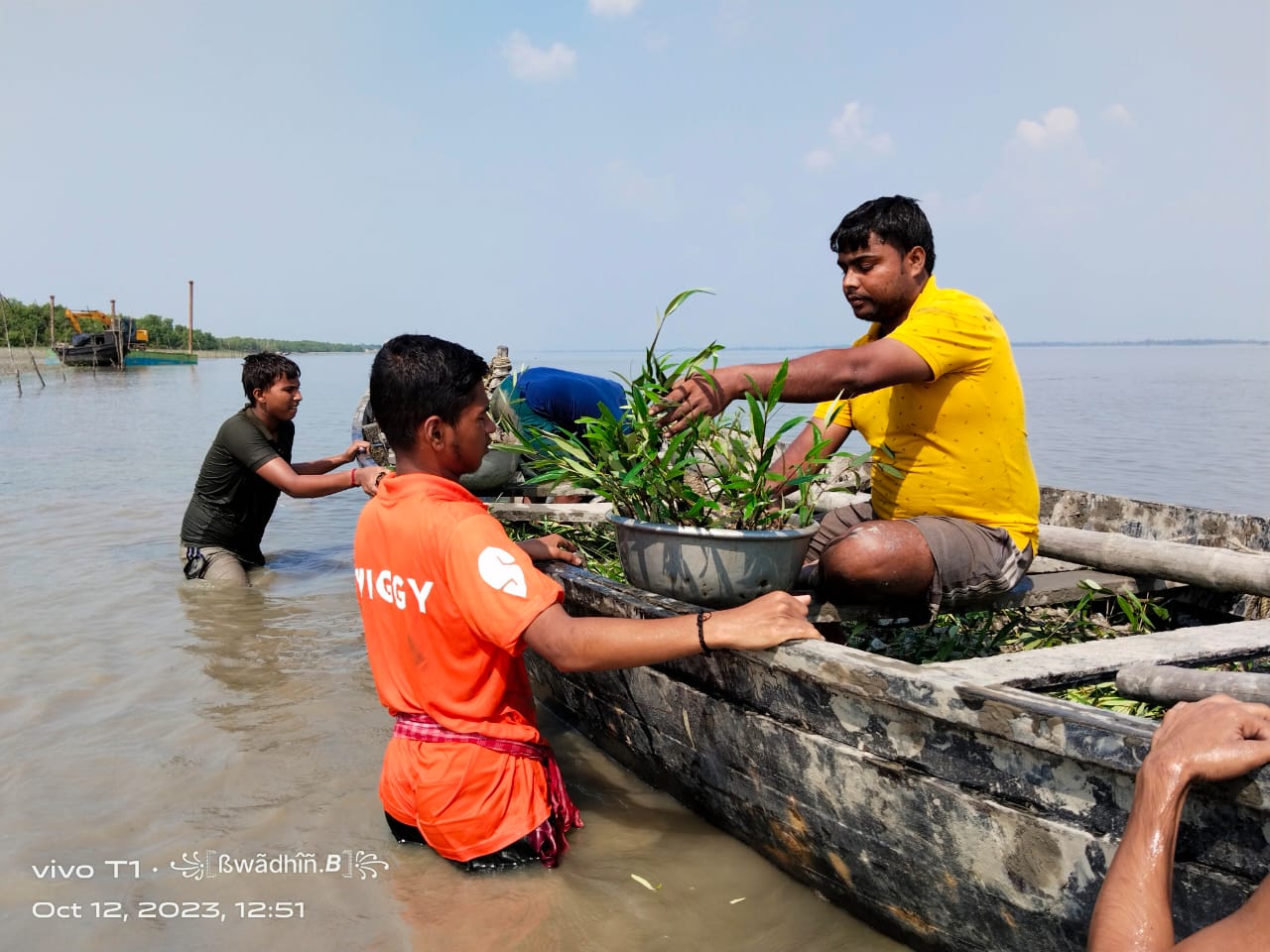
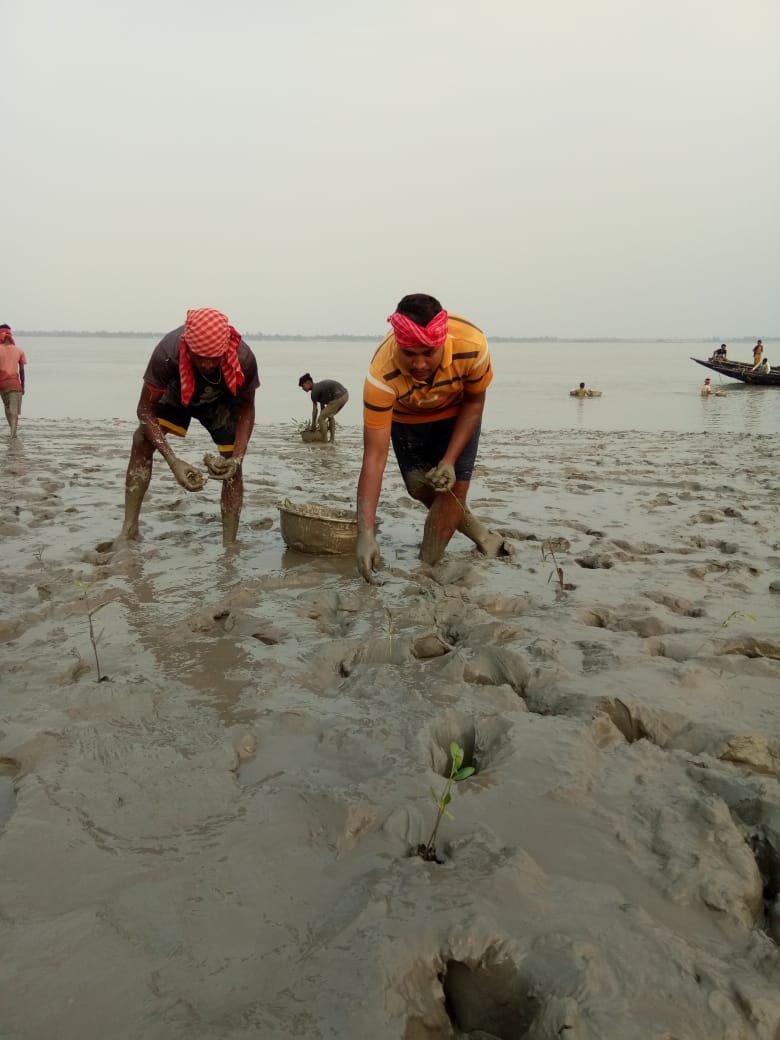



CONCLUSION
In conclusion, mangroves stand as vital ecosystems, bridging land and sea with unparalleled ecological significance. Their unique adaptations and resilient nature make them crucial in mitigating climate change, protecting coastlines, and fostering biodiversity. Preserving and restoring mangrove habitats is not merely an environmental choice; it is an investment in the health of our planet and the well-being of communities dependent on these coastal wonders. Let us recognize the importance of mangroves and work collectively to ensure their sustained existence for generations to come.
Without action, we may face the prospect of “A world without mangroves … a world deprived of the ecosystem services offered by mangrove ecosystems, perhaps within the next 100 years” (Duke et al., 2007).
